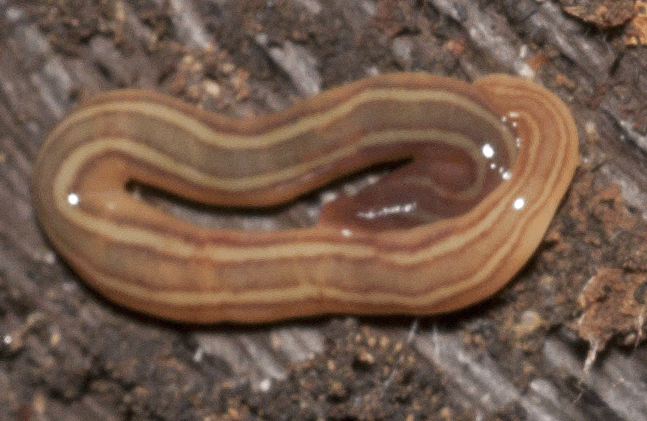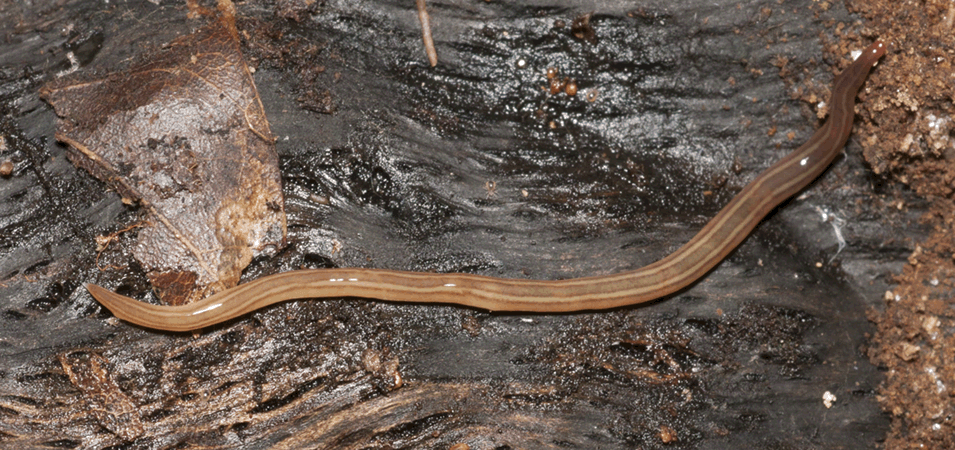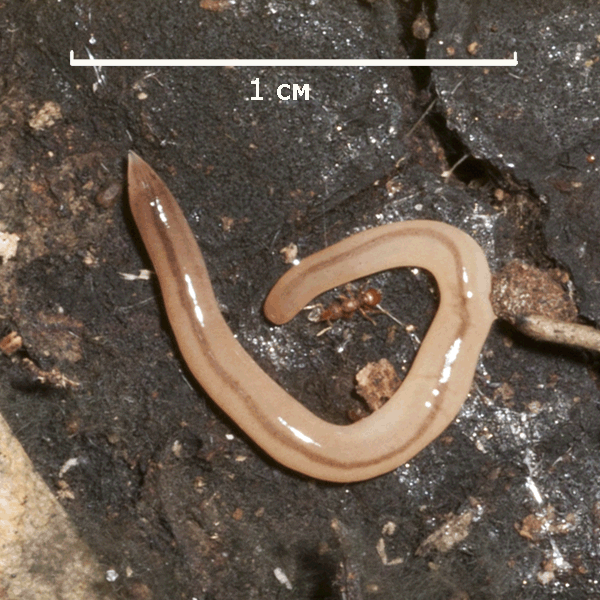Phylum Platyhelminthes (Flatworms) in the Christopher B. Smith Preserve
Platyhelminthes Characteristics: Platyhelminthes have bilateral symmetry, and are unsegmented and soft-bodied invertebrates. The body of a flatworm is dorsoventrally flattened. The worm does not have a body cavity that separates its body wall from its digestive tract.
Some members of the phylum are free-living, while others are parasites.
There are four classes in the phylum: 1) Trematoda (flukes), 2) Cestoda (tapeworms), 3) Turbellaria (planarians), and 4) Monogenea (small parasitic flatworms mainly found on skin or gills of fish).
The only member of the phylum that has been found so far in the Christopher B. Smith preserve is a land planarian.
Interactions in the Smith Preserve: A land planarian devours earthworms, slugs, insect larvae, and other planarians. Predators of land planarians include beetles, snails, and other land planarians.
Class |
Order |
Family |
Species Name |
Common Name |
Turbellaria |
Tricladida |
Geoplanidae |
Unknown |
Family Geoplanidae Unknown Species ... Land Planarian
|



